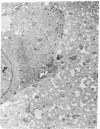Abstract
Pre- and postnatal injections of nerve growth factor, initiated with one dose on day 17 of gestation and continued after birth with daily subcutaneous administration until day 10 of life, produce massive transformation of chromaffin in sympathetic nerve cells in the rat adrenal medulla. Large sympathetic ganglia, absent in controls, adhere to the medial external surface of the gland. Nerve fibers produced by the transformed chromaffin cells invade the inner and outer cortical zones of the organ, producing cell depletion and substantial alteration of the structure of the cortical layers. When the growth factor treatment is initiated after birth, only a partial replacement of chromaffin with nerve cells takes place. The treatment is ineffective after the second postnatal week. Injections of a specific antiserum to nerve growth factor in 17-day-old rat fetuses, which were continued after birth, produce progressive and massive destruction of chromaffin cell precursors and of immature chromaffin cells in the adrenal medullary gland.
Full text
PDF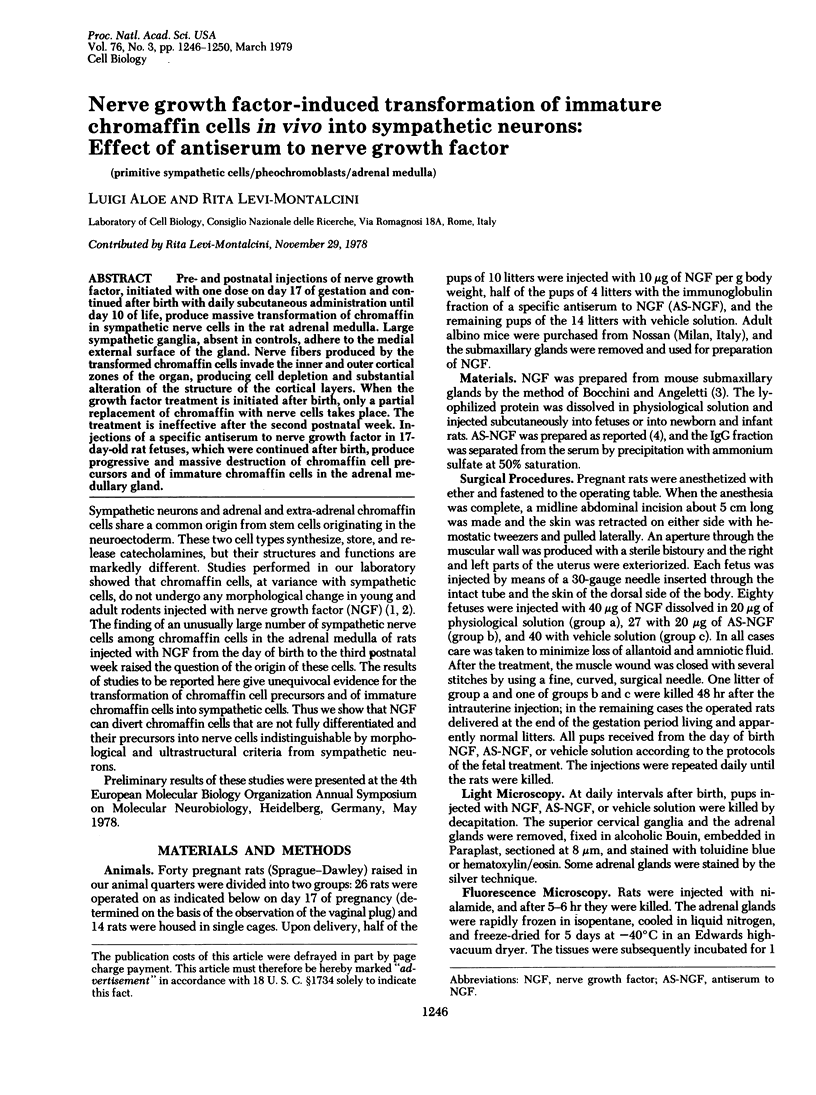
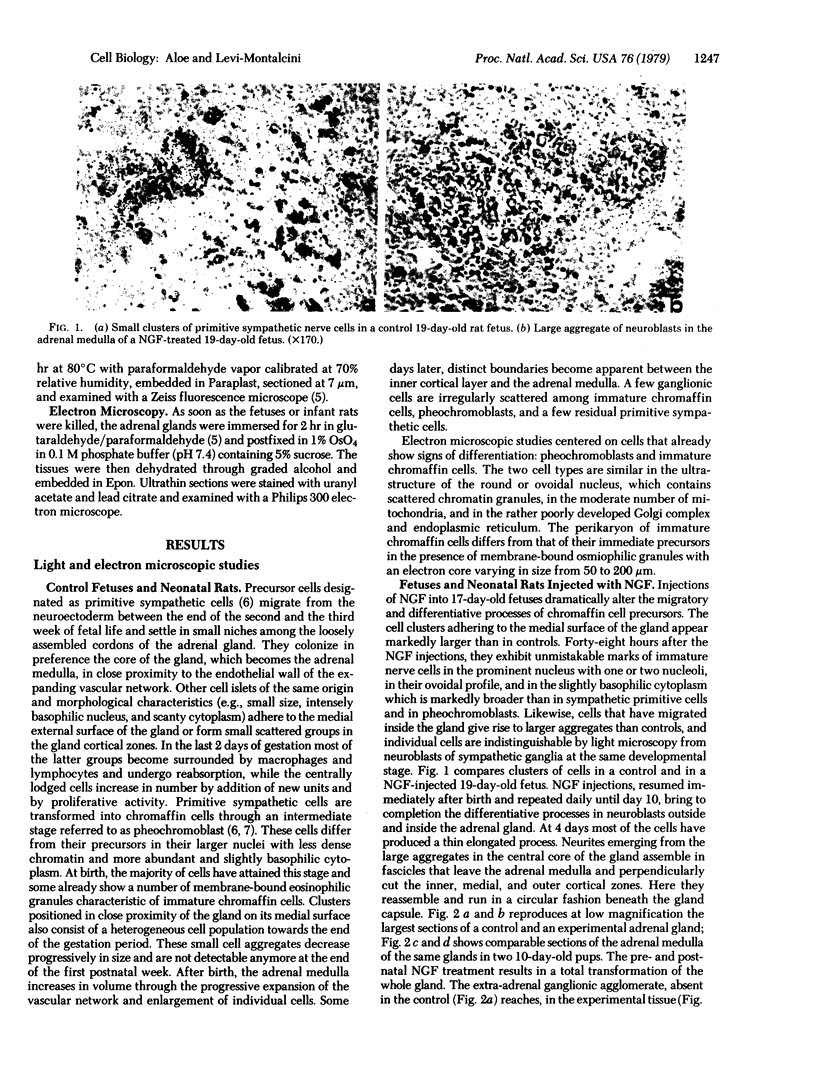
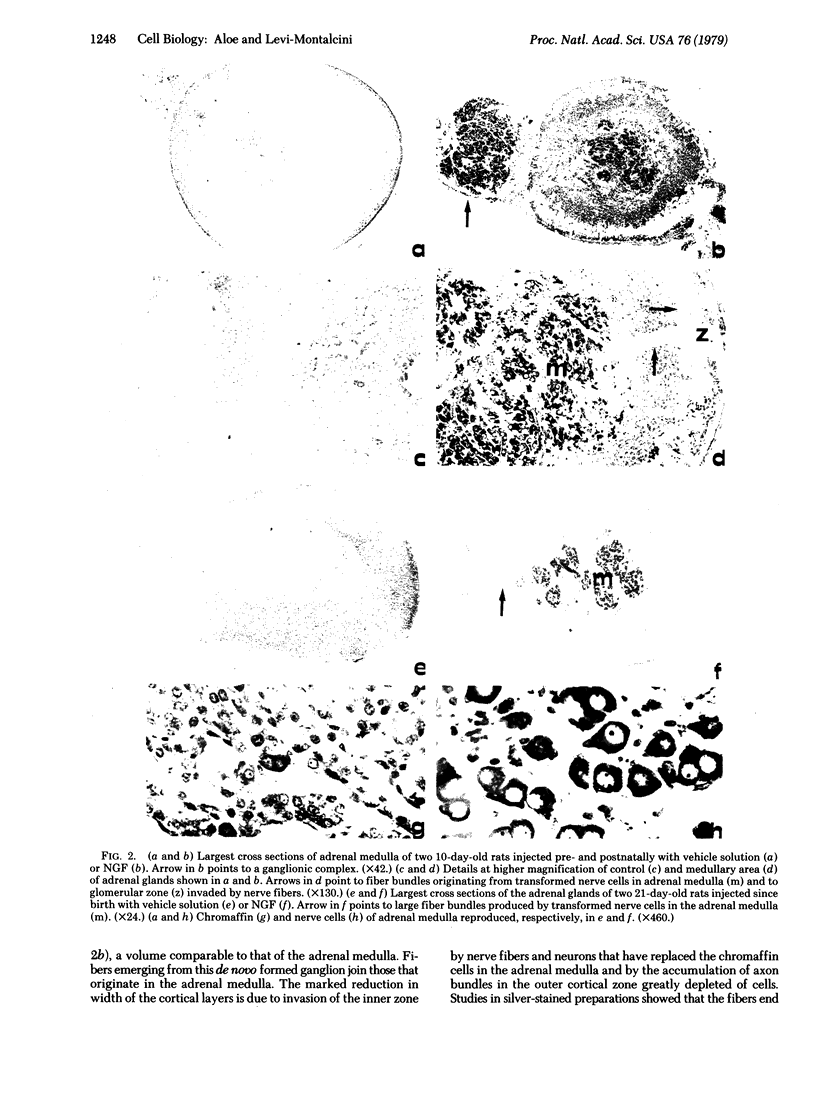
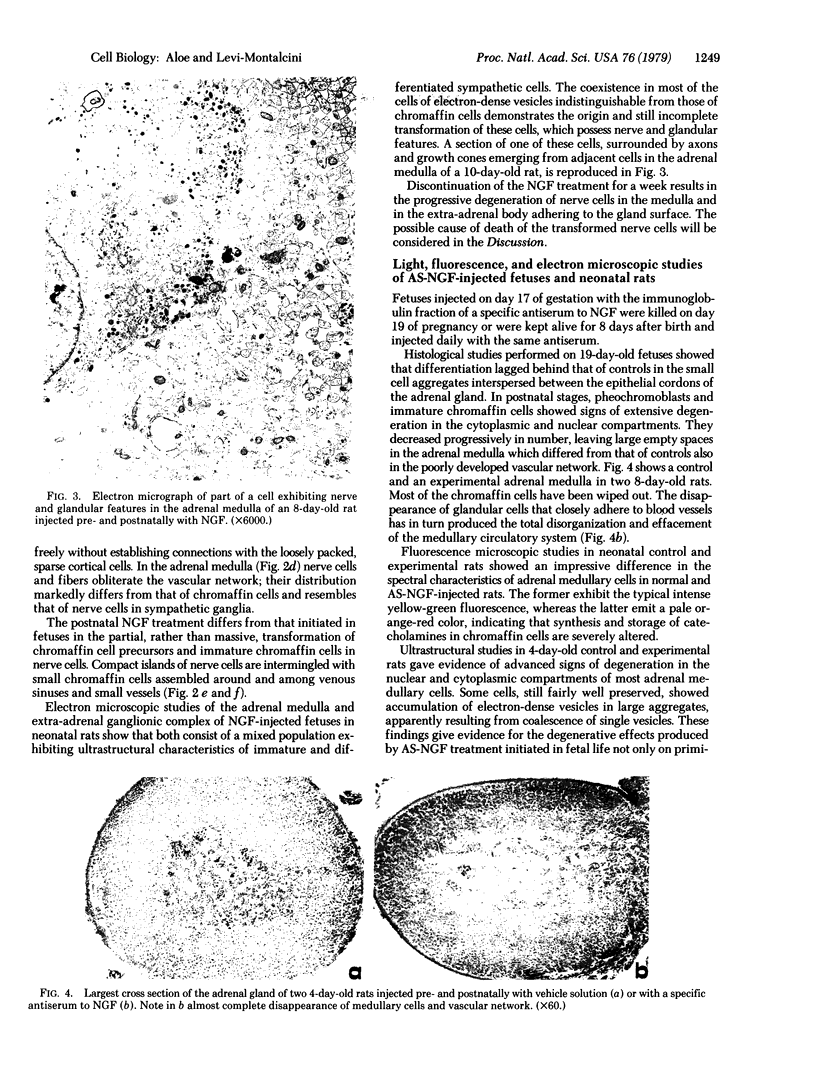
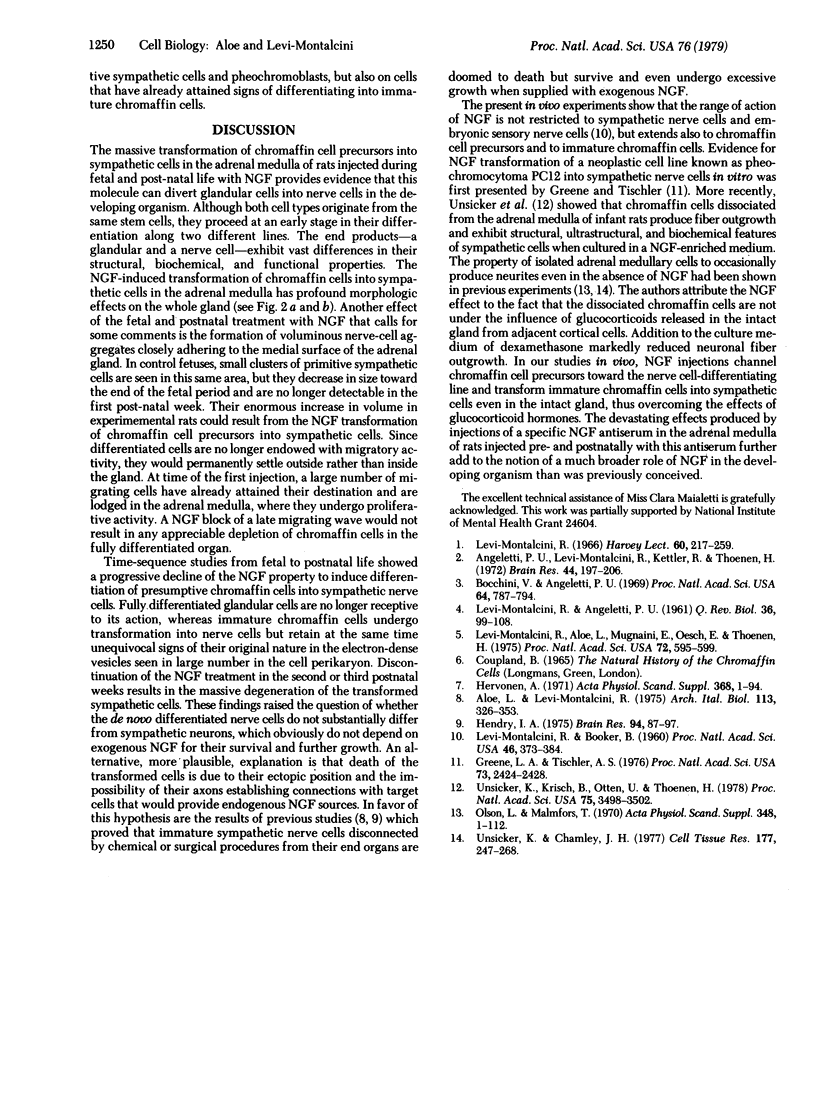
Images in this article
Selected References
These references are in PubMed. This may not be the complete list of references from this article.
- Aloe L., Mugnaini E., Levi-Montalcini R. Light and electron microscopic studies on the excessive growth of sympathetic ganglia in rats injected daily from birth with 6-OHDA and NGF. Arch Ital Biol. 1975 Dec;113(4):326–353. [PubMed] [Google Scholar]
- Angeletti P. U., Levi-Montalcini R., Kettler R., Thoenen H. Comparative studies on the effect of the nerve growth factor on sympathetic ganglia and adrenal medulla in newborn rats. Brain Res. 1972 Sep 15;44(1):197–206. doi: 10.1016/0006-8993(72)90375-7. [DOI] [PubMed] [Google Scholar]
- Bocchini V., Angeletti P. U. The nerve growth factor: purification as a 30,000-molecular-weight protein. Proc Natl Acad Sci U S A. 1969 Oct;64(2):787–794. doi: 10.1073/pnas.64.2.787. [DOI] [PMC free article] [PubMed] [Google Scholar]
- Greene L. A., Tischler A. S. Establishment of a noradrenergic clonal line of rat adrenal pheochromocytoma cells which respond to nerve growth factor. Proc Natl Acad Sci U S A. 1976 Jul;73(7):2424–2428. doi: 10.1073/pnas.73.7.2424. [DOI] [PMC free article] [PubMed] [Google Scholar]
- Hendry I. A. The response of adrenergic neurones to axotomy and nerve growth factor. Brain Res. 1975 Aug 22;94(1):87–97. doi: 10.1016/0006-8993(75)90879-3. [DOI] [PubMed] [Google Scholar]
- Hervonen A. Development of catecholamine--storing cells in human fetal paraganglia and adrenal medulla. A histochemical and electron microscopical study. Acta Physiol Scand Suppl. 1971;368:1–94. [PubMed] [Google Scholar]
- LEVI-MONTALCINI R., ANGELETTI P. U. Growth control of the sympathetic system by a specific protein factor. Q Rev Biol. 1961 Jun;36:99–108. doi: 10.1086/403331. [DOI] [PubMed] [Google Scholar]
- Levi-Montalcini R., Aloe L., Mugnaini E., Oesch F., Thoenen H. Nerve growth factor induces volume increase and enhances tyrosine hydroxylase synthesis in chemically axotomized sympathetic ganglia of newborn rats. Proc Natl Acad Sci U S A. 1975 Feb;72(2):595–599. doi: 10.1073/pnas.72.2.595. [DOI] [PMC free article] [PubMed] [Google Scholar]
- Levi-Montalcini R., Booker B. EXCESSIVE GROWTH OF THE SYMPATHETIC GANGLIA EVOKED BY A PROTEIN ISOLATED FROM MOUSE SALIVARY GLANDS. Proc Natl Acad Sci U S A. 1960 Mar;46(3):373–384. doi: 10.1073/pnas.46.3.373. [DOI] [PMC free article] [PubMed] [Google Scholar]
- Levi-Montalcini R. The nerve growth factor: its mode of action on sensory and sympathetic nerve cells. Harvey Lect. 1966;60:217–259. [PubMed] [Google Scholar]
- Olson L., Malmfors T. Growth characteristics of adrenergic nerves in the adult rat. Fluorescence histochemical and 3H-noradrenaline uptake studies using tissue transplantations to the anterior chamber of the eye. Acta Physiol Scand Suppl. 1970;348:1–112. [PubMed] [Google Scholar]
- Unsicker K., Chamley J. H. Growth characteristics of postnatal rat adrenal medulla in culture. A study correlating phase contrast, microcinematographic, histochemical, and electron microscopical observations. Cell Tissue Res. 1977 Feb 9;177(2):247–268. doi: 10.1007/BF00221086. [DOI] [PubMed] [Google Scholar]
- Unsicker K., Krisch B., Otten U., Thoenen H. Nerve growth factor-induced fiber outgrowth from isolated rat adrenal chromaffin cells: impairment by glucocorticoids. Proc Natl Acad Sci U S A. 1978 Jul;75(7):3498–3502. doi: 10.1073/pnas.75.7.3498. [DOI] [PMC free article] [PubMed] [Google Scholar]












